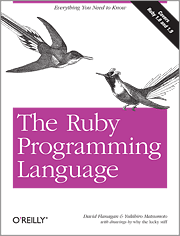
This post is OUT OF DATE. Sadly, Devver went out of business.
Devver is a new Ruby testing service that lets you run your tests in parallel on their cloud of servers. This means your tests (or specs, both Test::Unit and RSpec are supported) could run in a third of the time as usual (depending on your setup) and it’s as easy as copying a Rakefile into your project and entering a few settings. Devver stresses that “you won’t have to alter a single line of your code.” Devver is currently in public beta.

I got in touch with Devver cofounder Benjamin Brinckerhoff (pictured first in the image to the right) to get some background on the service, the reason for it being created, and how the whole thing works:
How did you guys come together to build Devver? Read More









 I’ve just had word from David Flanagan – co-author of
I’ve just had word from David Flanagan – co-author of  Sometimes taking an app down for debugging purposes is just not an option. Luckily a new tool called
Sometimes taking an app down for debugging purposes is just not an option. Luckily a new tool called 


 I recently came across the interesting-looking
I recently came across the interesting-looking  Simone Carletti of Altura Labs recently announced on
Simone Carletti of Altura Labs recently announced on 




